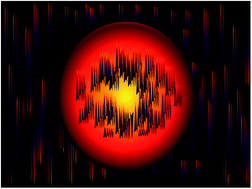Excitation and ionization processes of chlorine in molybdenum dichloride dioxide flakes using the glow discharge mass spectrometry technique
Abstract
In argon glow discharge (GD) plasma, ionization processes for chlorine are independent of metastable states and ions of the plasma gas due to its higher ionization energy as compared to Arm and non-availability of suitable ionic energy levels for selective state population. Electron ionization is the only way of producing singly charged ions of chlorine in argon plasma. Moreover, the presence of oxygen, either as the constituent element in the sample material or trace molecular gas in low pressure analytical GD plasmas significantly affects the sputter rates, number density of metastable states/ions of the plasma gas, electron density and EEDF. The changes in these parameters due to oxygen correspondingly affect the excitation/ionization processes of analytes. Thus lower ionization efficiency is expected for chlorine in oxychloride complex samples. Although, quantification of chlorine is difficult in low pressure analytical GDs, higher ion ratios for chlorine are observed in argon plasma with a molybdenum dichloride dioxide (MoCl2O2) flake sample. How does it happen? Molybdenum oxyhalide samples have not been investigated so far using low pressure analytical GD plasmas and until the present work, there has been no explanation on the increase in chlorine ion signals in earlier work on Cl/O plasmas. The purpose of this work is to analyse the complex non-conducting flake sample pressed on a conducting surface by using a dc source, understand the role of oxygen as a constituent element in the flakes, identification of spectral interferences introduced by molybdenum and report the discharge mechanisms responsible for the excitation/ionization of chlorine in argon plasma. Preliminary results suggest that the enhancement of ion current ratio for chlorine is attributed to the asymmetric charge transfer processes involving oxygen ions.



 Please wait while we load your content...
Please wait while we load your content...